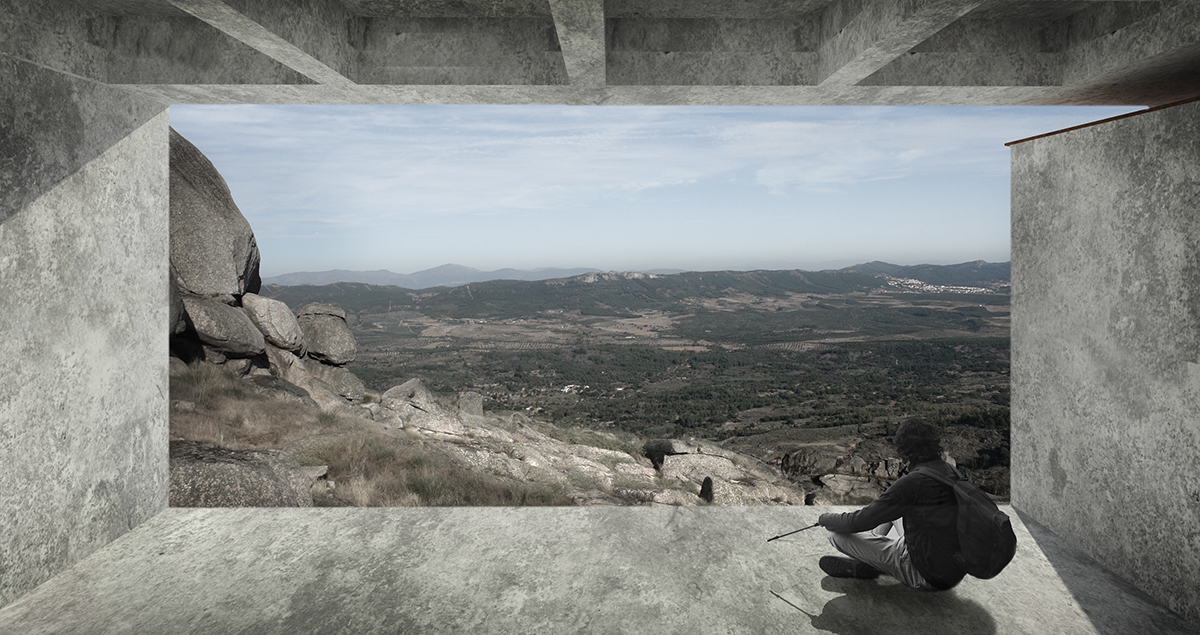GARDEN OF SANCTITY _ SITE SANCTUARY
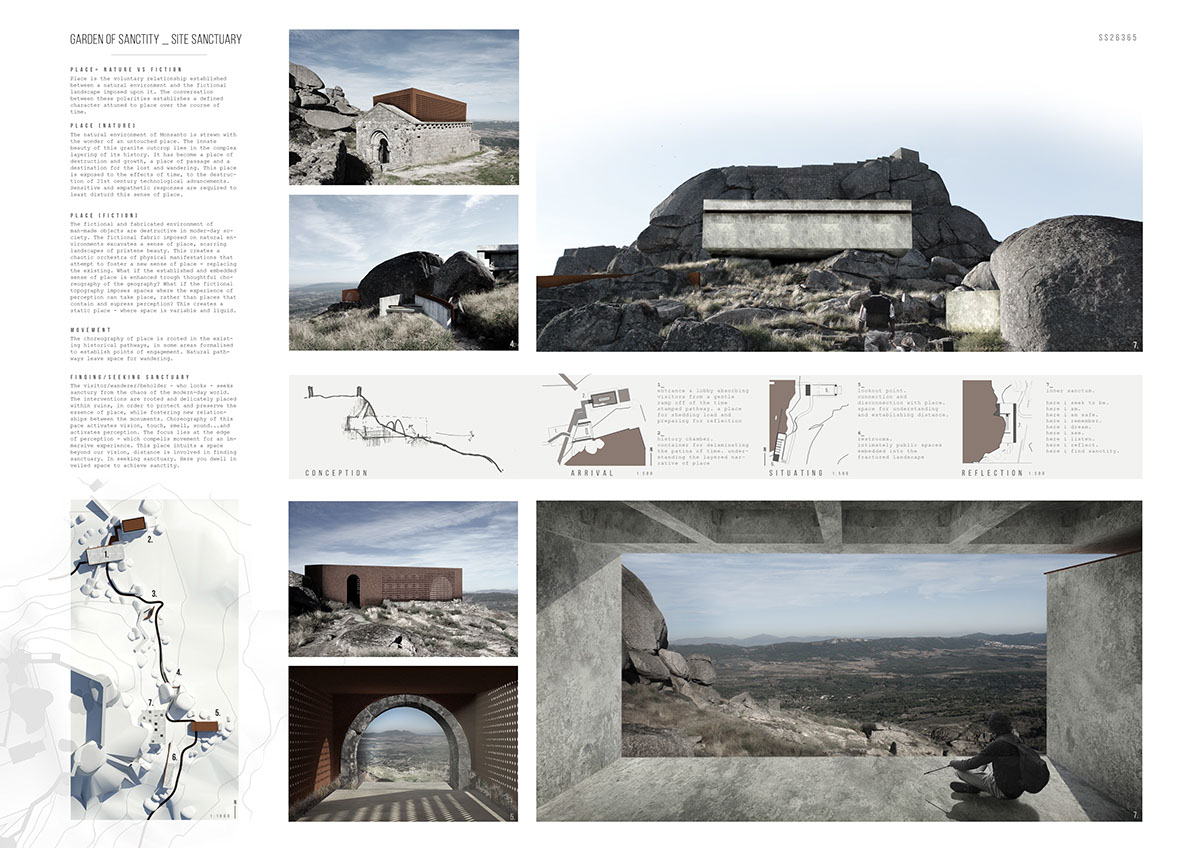
The Site Sanctuary is a place of memory and remembrance, an intimate space to
celebrate the history and the sensitive experience and nature of place. The Site
Sanctuary provides a space for quiet reflection and is a platform for meditation; a
place for introspection to further intensify the connection between place, memory
and profound tranquillity.
celebrate the history and the sensitive experience and nature of place. The Site
Sanctuary provides a space for quiet reflection and is a platform for meditation; a
place for introspection to further intensify the connection between place, memory
and profound tranquillity.
Site Sanctuary located on the powerful natural scenery of Monsanto, Portugal.
Monsanto has a number of significant landmarks within a prominent landscape; it is
a place of great cultural heritage and historical significance with characteristics that
must be fully preserved.
Monsanto has a number of significant landmarks within a prominent landscape; it is
a place of great cultural heritage and historical significance with characteristics that
must be fully preserved.





Monsanto, Portugal
Monsanto is a powerful natural scenery with massive granite boulders and stunning panoramic views where visitors can experience the immensity of the surrounding landscape. Located in the northeast of Portugal, on the steep slopes of a granite hill that emerges abruptly on the plain of the surrounding landscape, the unique historic village is carved and built on and in-between huge granite boulders.
Monsanto is a powerful natural scenery with massive granite boulders and stunning panoramic views where visitors can experience the immensity of the surrounding landscape. Located in the northeast of Portugal, on the steep slopes of a granite hill that emerges abruptly on the plain of the surrounding landscape, the unique historic village is carved and built on and in-between huge granite boulders.
From this geographical location, Monsanto was an important place for strategic defence of territory and today is a remarkable landmark within this vast territory. The Castle of Monsanto is located in a prominent location and is only accessed by foot, led by stone paths that begin from the village centre. The numerous vestiges of the occupation are testimony to the presence of a pre-Roman castro and the
Romans occupation in the foot of the hill. Conquered from the Moors by D. Afonso Henriques (the first king of Portugal), the castle was donated to the Templars in 1165 in order to build or rebuild it and become a strategic defence position in the territory on the eastern border of the country. In the 19th century, the walls of the castle were severely damaged by the explosion of a gunpowder warehouse and the collapse of a
granite boulder, leading to its progressive abandonment. Inside the enclosed walls there are remains of a citadel, where the Saint Mary’s
Chapel and the ‘cistern’ are located.
Romans occupation in the foot of the hill. Conquered from the Moors by D. Afonso Henriques (the first king of Portugal), the castle was donated to the Templars in 1165 in order to build or rebuild it and become a strategic defence position in the territory on the eastern border of the country. In the 19th century, the walls of the castle were severely damaged by the explosion of a gunpowder warehouse and the collapse of a
granite boulder, leading to its progressive abandonment. Inside the enclosed walls there are remains of a citadel, where the Saint Mary’s
Chapel and the ‘cistern’ are located.
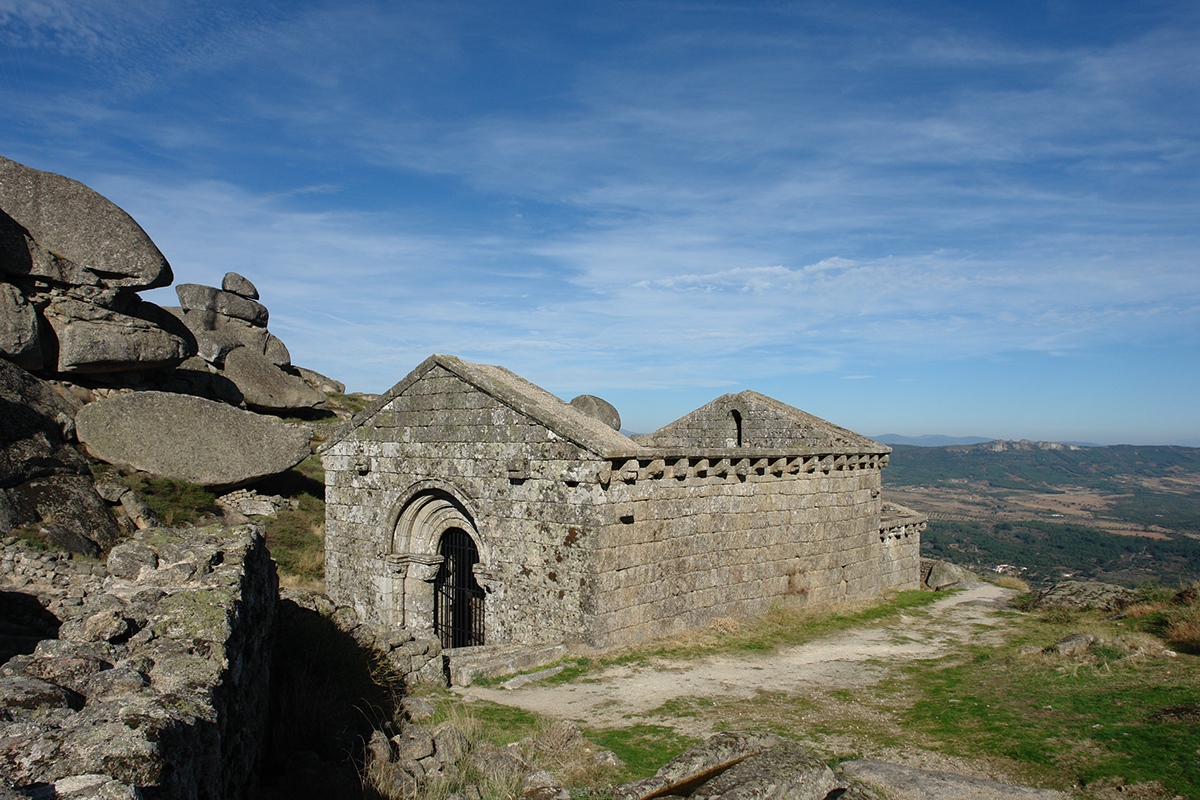
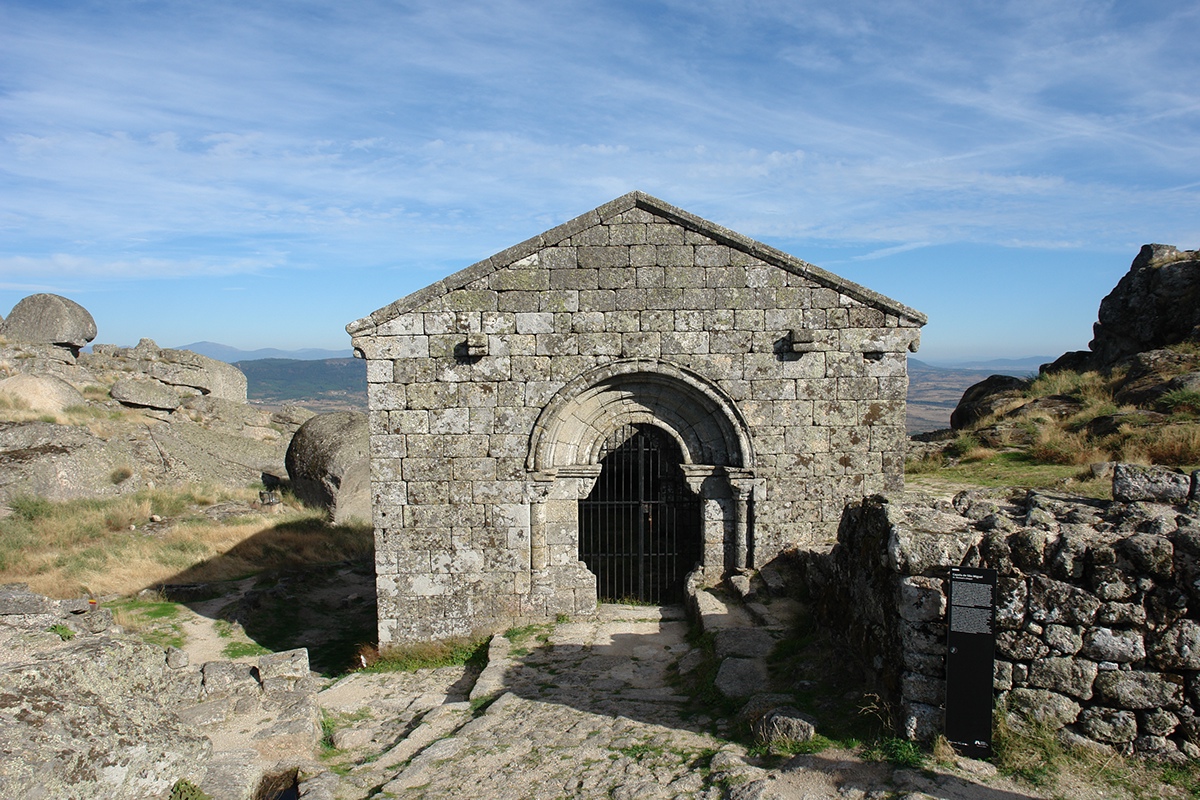
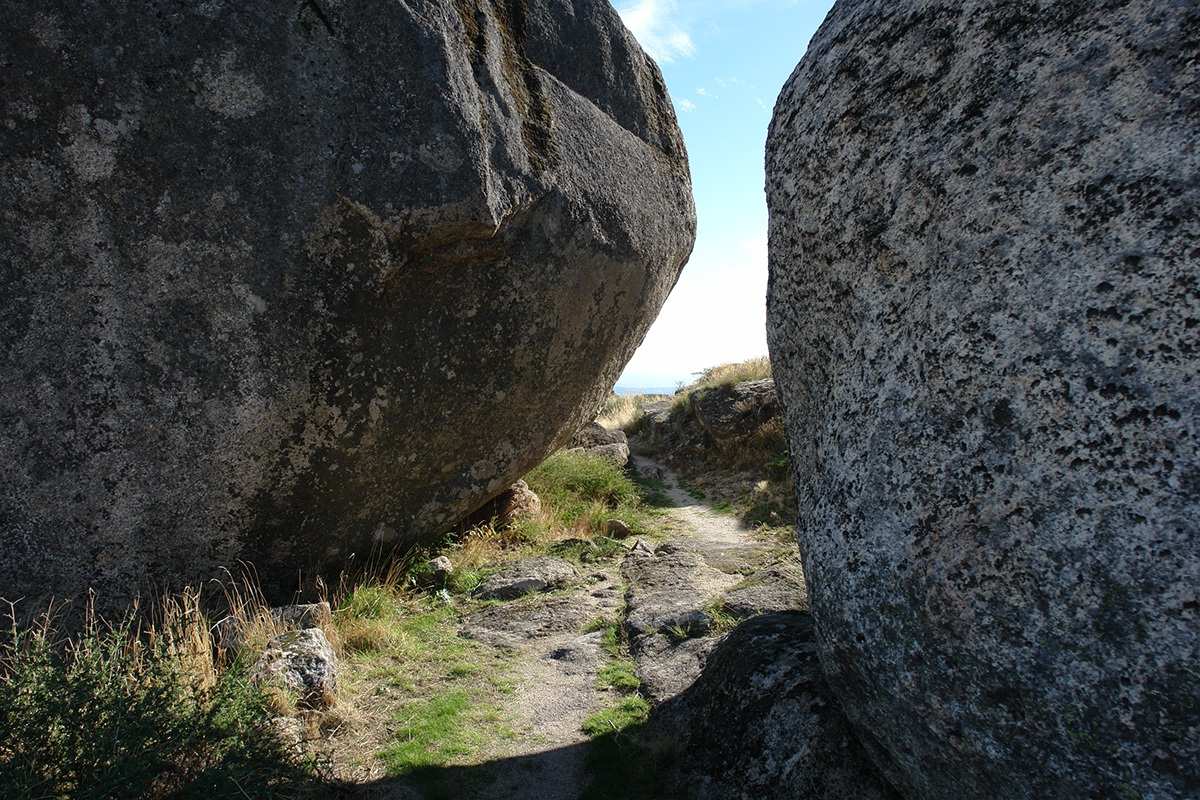
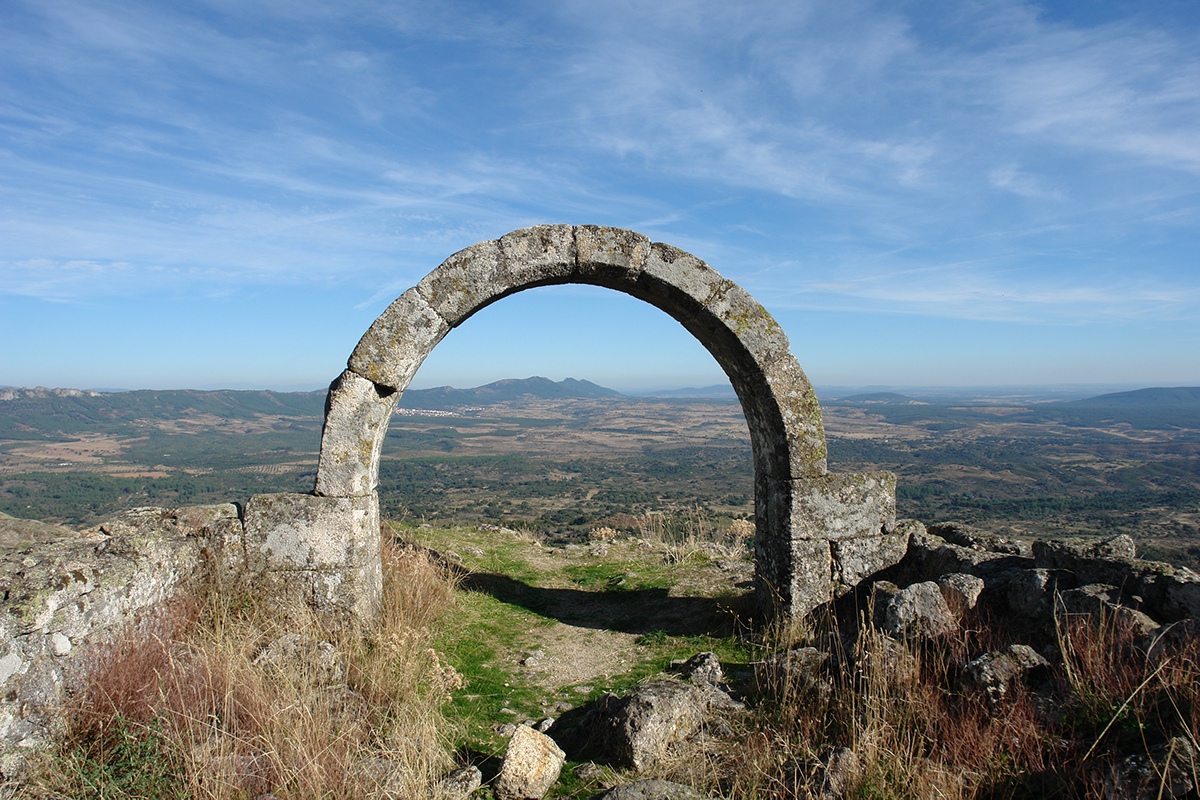
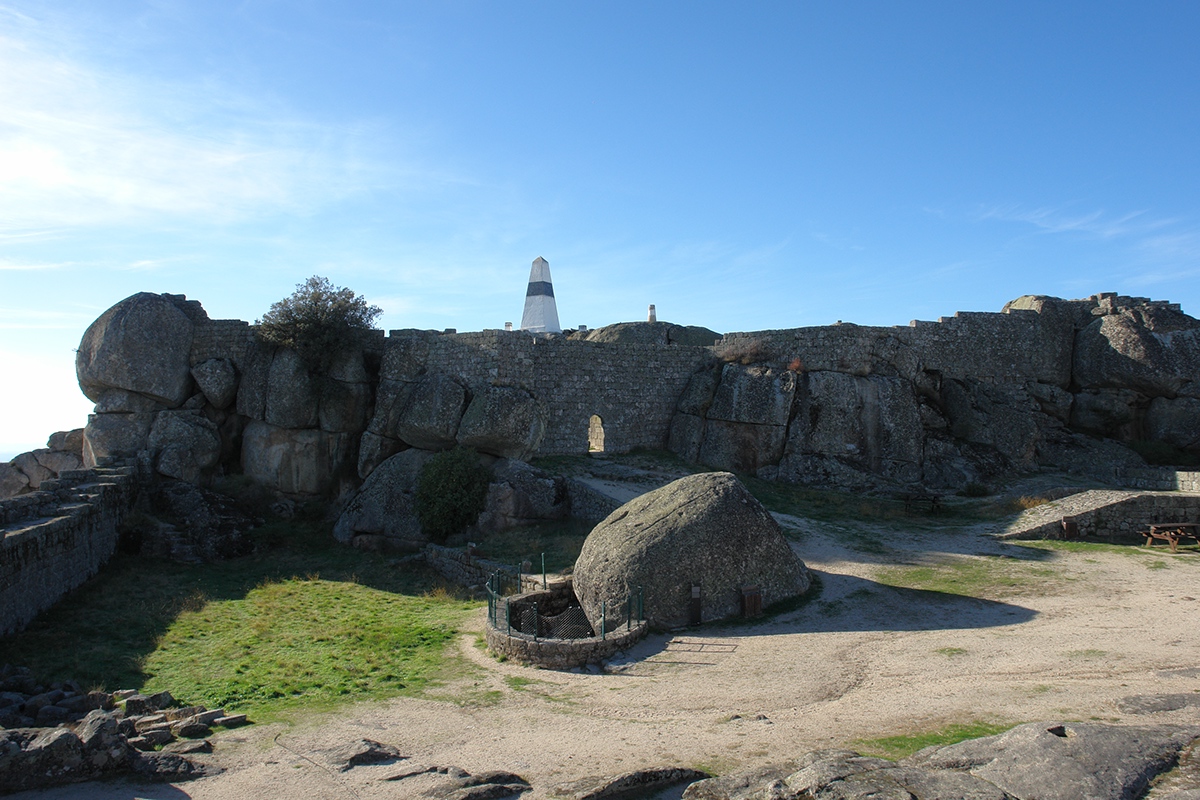

INTERVENTION PROPOSAL
The visitor/wanderer/beholder - who looks - seeks sanctury from the chaos of the modern-day world. The interventions are rooted and delicately placed within ruins, in order to protect and preserve the essence of place, while fostering new relationships between the monuments. Choreography of this place activates vision, touch, smell, sound...and activates perception. The focus lies at the edge of perception - which compells movement for an immersive experience. This place intuits a space beyond our vision, distance is involved in finding sanctuary. In seeking sanctuary. Here you dwell in veiled space to achieve sanctity.

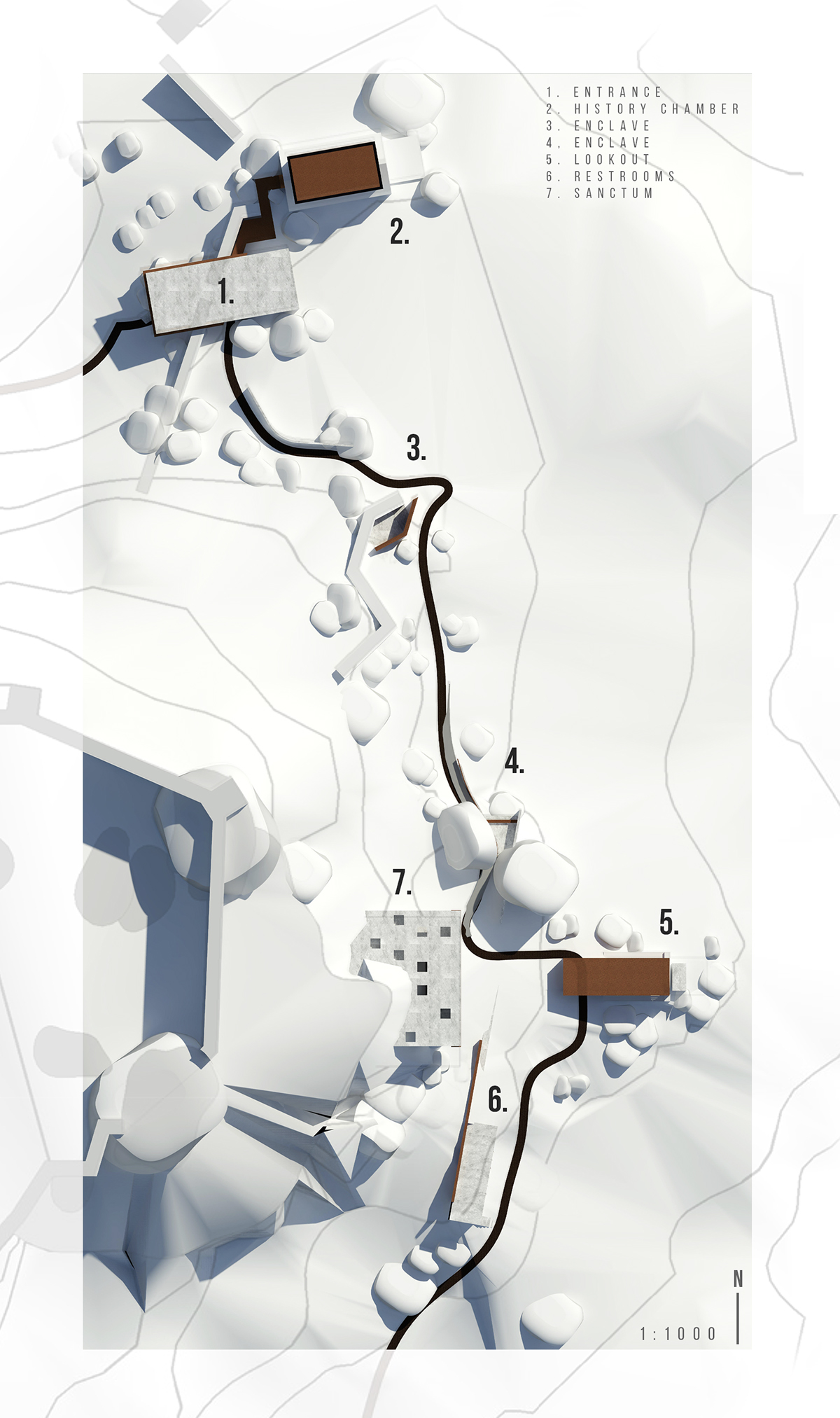
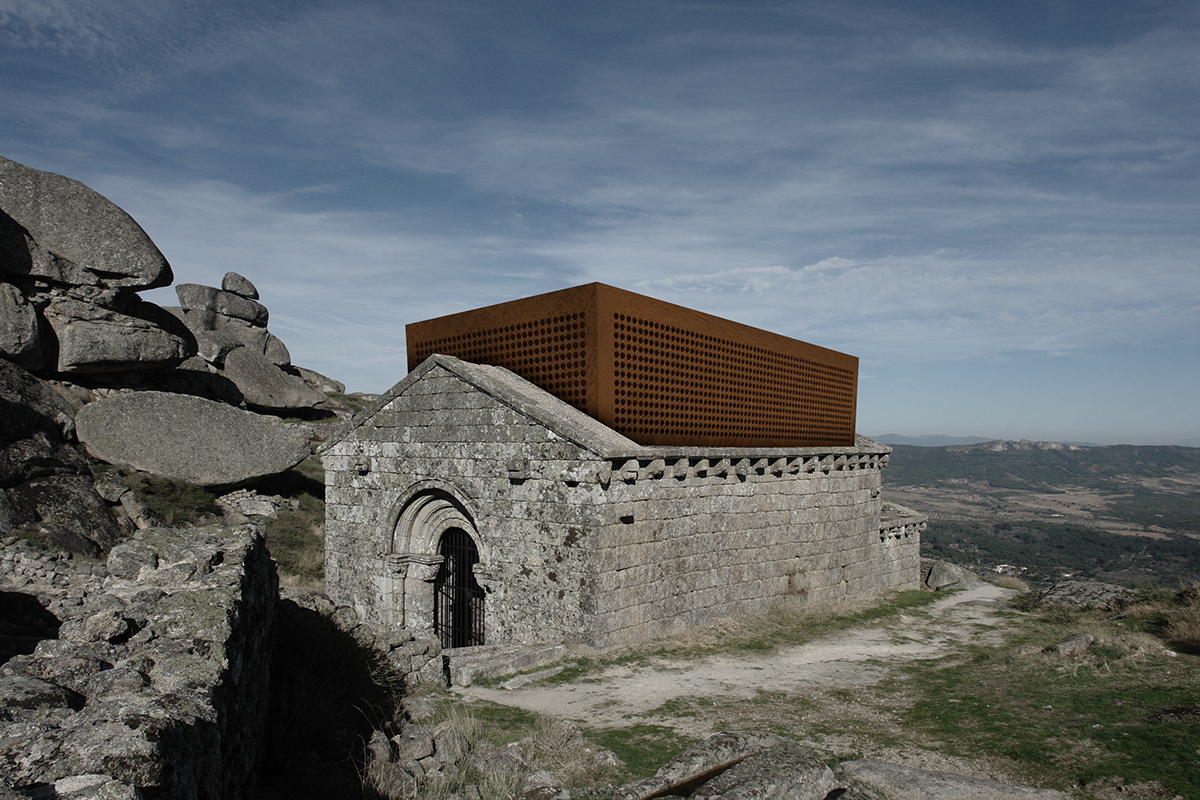
Place = Nature vs Fiction
Place is the voluntary relationship established between a natural environment and the fictional landscape imposed upon it. The conversation between these polarities establishes a defined character attuned to place over the course of time.

Place [Nature]
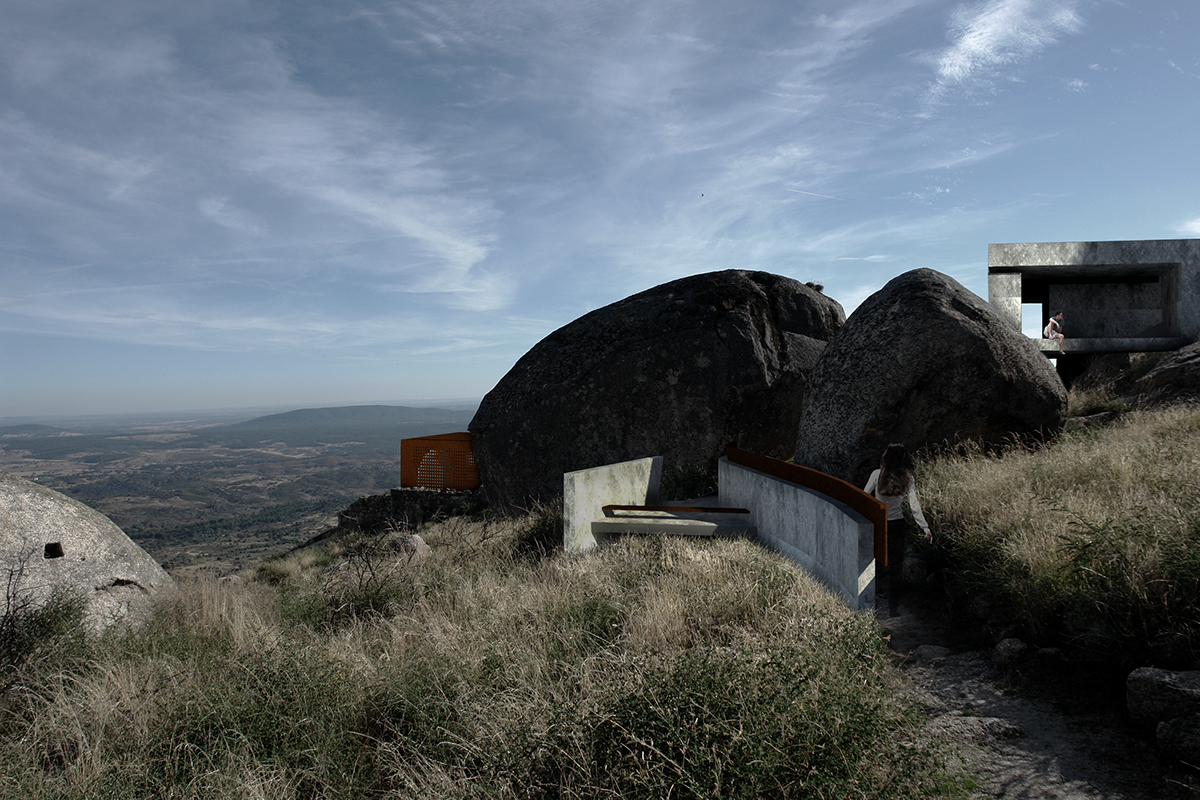
Place [Fiction]
The fictional and fabricated environment of man-made objects are destructive in modern-day society. The fictional fabric imposed on natural environments excavates a sense of place, scarring landscapes of pristene beauty. This creates a chaotic orchestra of physical manifestations that attempt to foster a new sense of place - replacing the existing. What if the established and embedded sense of place is enhanced trough thoughtful choreography of the geography? What if the fictional topography imposes spaces where the experience of perception can take place, rather than places that contain and supress perception? This creates a static place - where space is variable and liquid.
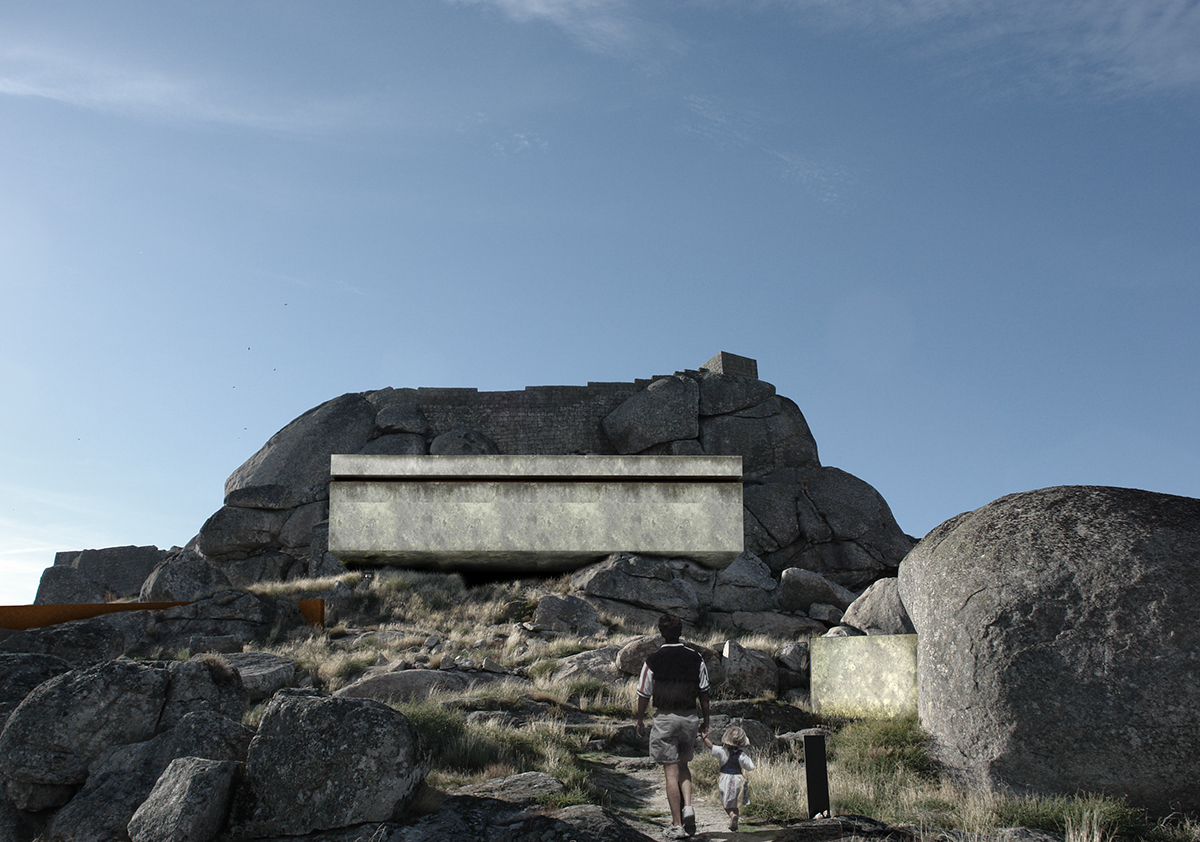
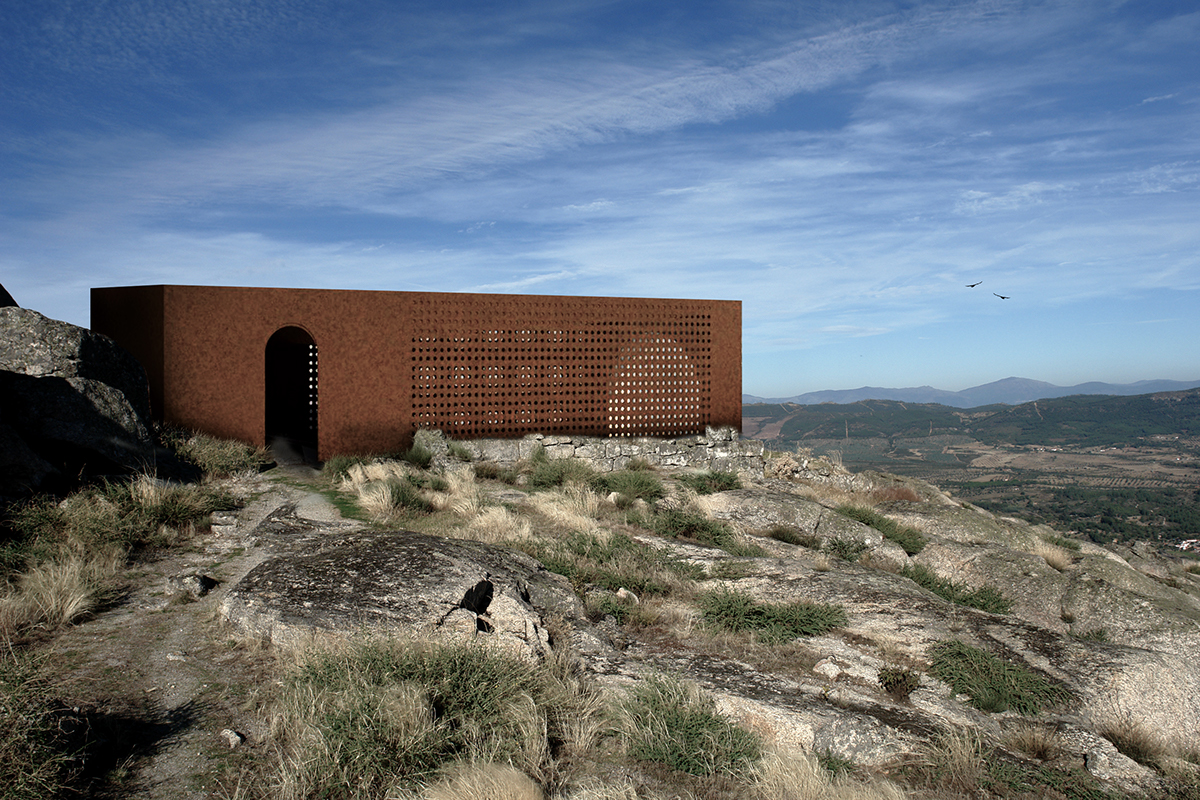
The choreography of place is rooted in the existing historical pathways, in some areas formalised to establish points of engagement. Natural pathways leave space for wandering.
